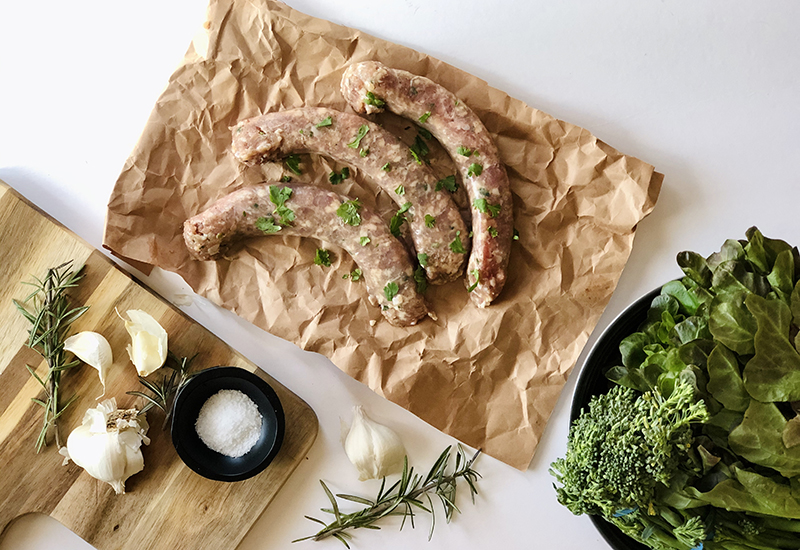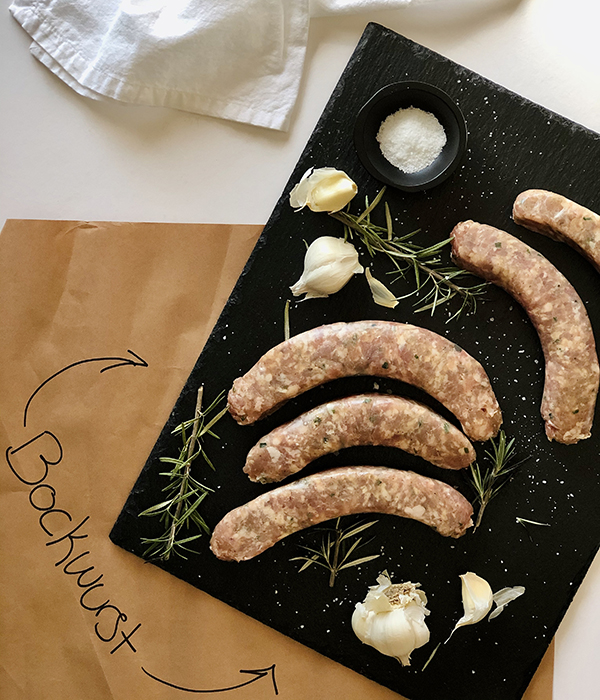It is Bockwurst Season!

Photography provided by Lauren Schulte of @TheBiteSizePantry.
Easter is on its way, which means we’ve officially made it to Bockwurst season! Contrary to its name, this European sausage is anything but the “wurst!” In fact, it’s actually a Heinen family staple at Easter, and no one loves it more than Tom Heinen.
What exactly is Bockwurst? According to Tom, “Bockwurst is a traditional German sausage that my grandfather introduced decades ago to the Cleveland market. It has a very distinctive taste and is much leaner than traditional sausages. It is great for breakfast, lunch or dinner and is only available for a couple of weeks around the Easter holiday.”

Unlike other sausages, Bockwurst is unique because of it’s two primary ingredients: veal and milk.
While typically enjoyed during the Spring season, Tom always stocks his freezer extra to enjoy throughout the year. If you don’t intend to eat it quickly, we recommend doing the same.
Interested in trying Heinen’s Bockwurst? Visit your local Heinen’s Meat Department and ask the butcher for a few links.
Note: Bockwurst does not cook well on the grill. See below for Tom’s favorite way to prepare this special German sausage!
Method:
- Arrange the Bockwurst in a single layer on the bottom of a large pot. Add enough cold water to cover the Bockwurst by about an inch.
- On the stove over medium-low heat, slowly bring the water to just below boiling. Don’t let the water boil. It should take 30-40 minutes to reach the “near boiling point.”
- As the water reaches the near boiling point, remove the pot from the heat.
- Put a tight lid on the pot and allow to rest for 15–20 minutes. Carefully remove the Bockwurst with tongs, being mindful not to split the skin.
- The Bockwurst is fully cooked when the internal temperature registers at 165˚F. If you notice the Bockwurst casing beginning to split during the cooking process, quickly lower the heat.
Tom’s Tip: Finish the Bockwurst by browning it in a pan (butter optional) to create a slightly crisp texture.




Was shopping at Southpark yesterday. Couldn’t find spätzle in refrigerator section. Asked Carl, a butcher, where I might find them. He told me the product I was looking for was not there. He took time to walk me over to the international aisle to show me a package where I can make them myself. Never would have looked there on my own since I didn’t know it existed. Hope they are good. Thought this was so thoughtful of Carl. I normally shop at Middleburg so I never met Carl before.
The bockwurst that I bought at the Mentor Heinen doesn’t look anything like your bockwurst photos. It looks more like
kielbasa.
Sounds tasty! We’re glad to hear you like the bockwurst. Thanks for shopping with us!
I’ve been a Heinen’s shopper since I was 16 when my Mom sent me on my bicycle to pick up a few things at the Shaker Square store. When I graduated from college I shopped at the Green Road store. I am now an avid shopper at the Mayfield Village store. Heinen’s not only has excellent food, but they have a SERVICE ATTITUDE from which many companies can learn. At one point in my life I lived next door to Barrington, IL in the Chicagoland are. There is a Heinen’s store there now.
CONGRATULATIONS JEFF AND TOM on your Anniversary. You deserve the BEST OF WISHES because YOU give THE BEST!!!
Lois, we appreciate your kind words and compliments! Thank you for shopping with us!